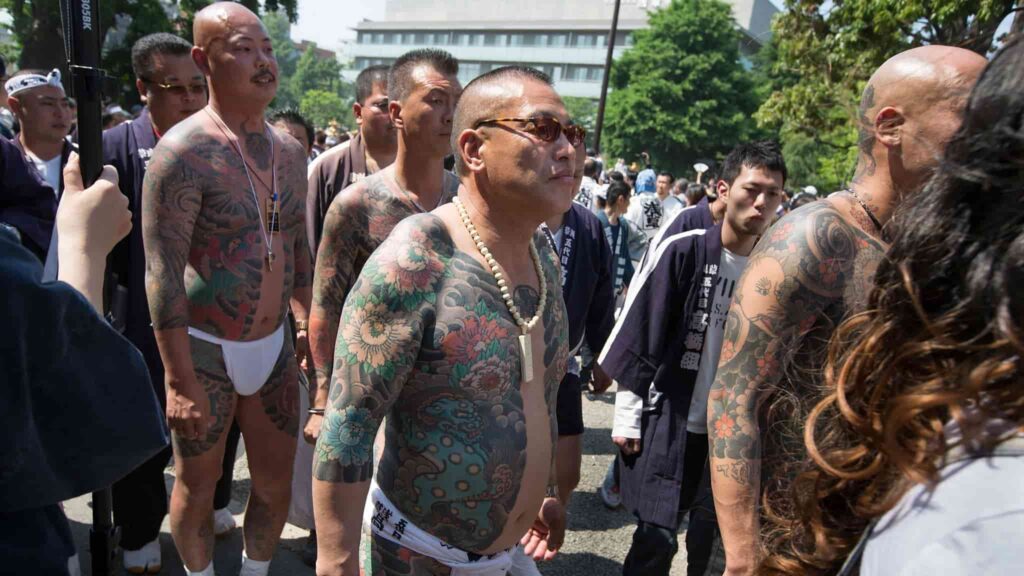
Japan’s criminal landscape is undergoing a significant transformation. The traditional yakuza, once the dominant force in organized crime, are witnessing a decline, making way for a new, decentralized group known as the tokuryū. This shift reflects broader societal changes and poses new challenges for law enforcement.
🉐 The Yakuza: Tradition and Hierarchy
Originating in the 17th century, the yakuza are Japan’s most notorious organized crime syndicates. They are characterized by a strict hierarchical structure, with members adhering to codes of loyalty and conduct. Yakuza activities have historically included extortion, gambling, drug trafficking, and control over construction and entertainment industries. Despite their criminal nature, yakuza groups have, at times, engaged in community service, further complicating their public image.
However, in recent years, yakuza membership has plummeted. From a peak of 180,000 members in the 1960s, numbers have dwindled to approximately 18,800 by the end of 2024. This decline is attributed to stringent anti-yakuza laws, societal rejection, and the aging of existing members.
🕶️ The Rise of Tokuryū: Anonymous and Fluid
In contrast to the yakuza’s rigid structure, tokuryū groups are decentralized and often operate anonymously. The term “tokuryū” combines the Japanese words for “anonymous” and “fluid,” reflecting their lack of formal organization. These groups primarily recruit young individuals through social media and encrypted messaging apps, offering high-paying “dark part-time jobs” (yami-baito) that often involve criminal activities such as fraud, theft, and even murder.
Between September 2021 and February 2023, over 10,000 individuals associated with tokuryū were arrested, surpassing arrests of traditional gang members. Their operations are not confined to Japan; some tokuryū groups have extended their activities to countries like Cambodia, Thailand, and Vietnam.
⚖️ Comparing Yakuza and Tokuryū
| Aspect | Yakuza | Tokuryū |
|---|---|---|
| Structure | Hierarchical with defined leadership | Decentralized and anonymous |
| Recruitment | Through established networks and rituals | Via social media and online platforms |
| Activities | Extortion, gambling, drug trafficking | Fraud, theft, cybercrime, contract killings |
| Public Presence | Visible with identifiable symbols and offices | Operate covertly with no fixed locations |
| Law Enforcement Focus | Targeted by anti-gang laws and regulations | Challenging due to anonymity and fluidity |
🚨 Law Enforcement Challenges
The emergence of tokuryū presents new challenges for Japanese law enforcement. Their lack of structure and use of technology make them difficult to track and infiltrate. In response, authorities have established specialized units to monitor online activities and have increased international cooperation to combat these transnational networks.
🧭 Conclusion
The decline of the yakuza and the rise of tokuryū signify a shift in Japan’s criminal underworld. As traditional organized crime gives way to decentralized, tech-savvy groups, law enforcement agencies must adapt their strategies to address these evolving threats. Understanding the distinctions between these groups is crucial for developing effective countermeasures and ensuring public safety.
#Yakuza #Tokuryu #JapaneseCrime #OrganizedCrime #Cybercrime #YamiBaito #JapanUnderworld #CrimeEvolution #LawEnforcement #CriminalNetworks #SocialMediaCrime #DecentralizedCrime #TraditionalMafia #ModernCrime #YouthCrime #AnonymousGangs #CriminalRecruitment #OnlineFraud #GangDecline #CrimeStatistics #PublicSafety #CriminalJustice #TransnationalCrime #CrimePrevention #DigitalCrime #CrimeTrends #OrganizedCrimeJapan #YakuzaVsTokuryu #CrimeAnalysis #UnderworldShift